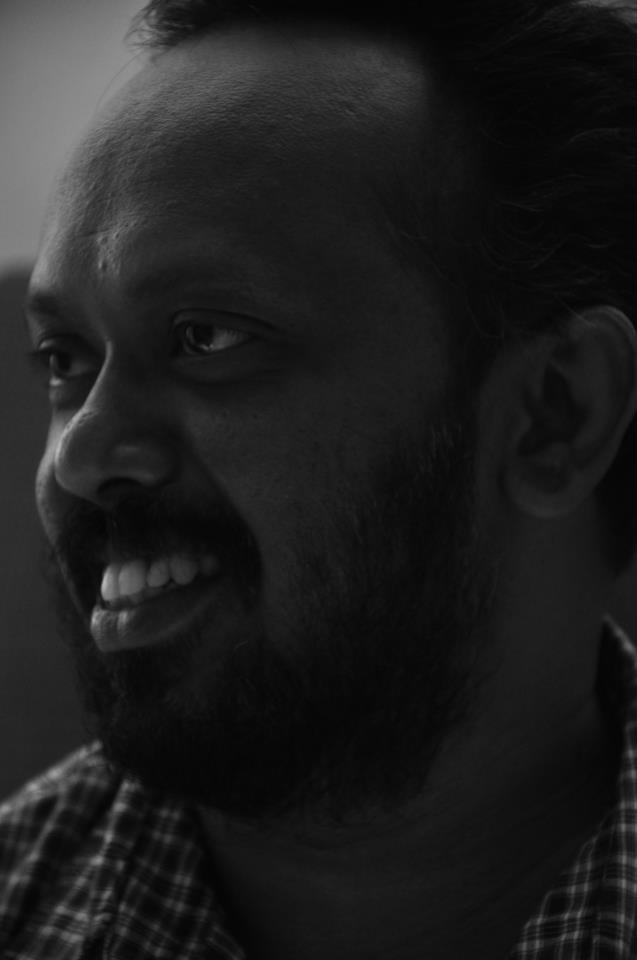Ajith Kumar A S
 The people in the protest land in Arippa in Kollam district in Kerala, are celebrating the first anniversary of their land struggle in the last week of December. It was on December 31st, 2012, that over 150 landless families, under the leadership of ADMS, ‘occupied’ and set up temporary shelters made of plastic sheets in the revenue land of Arippa and started living there.
The people in the protest land in Arippa in Kollam district in Kerala, are celebrating the first anniversary of their land struggle in the last week of December. It was on December 31st, 2012, that over 150 landless families, under the leadership of ADMS, ‘occupied’ and set up temporary shelters made of plastic sheets in the revenue land of Arippa and started living there.
Their habitation in the land itself was a protest. People have the right to celebrate this act because the protest had to face a lot of obstacles and threats in the initial stages. The mainstream parties were against the ‘occupation’ of revenue land and they even organized physical attacks on the protesters. They blocked supply of food and medicines to the land. The people living in the protest land were not allowed to buy anything from the local shops outside the land. The ‘local people’ thought that the protesters would vacate the place if they were pushed into hunger and disease. But the struggle continued.
The protesters cultivated vegetables and grains there and developed it as a better place for habitation. The power they have established on the land is a reason for celebration. There are over a thousand families residing in the protest land now. This maybe a more genuine ‘occupy movement’ than any other occupy movements in the west.

‘From colonies to cultivable land’
The 90 acres of revenue land in Arippa were earlier leased to Tangal Kunju Musliyar. When the lease period ended, 21.54 acres of the land were allotted to the 21 families who had participated in the Chengara land struggle as part of the Chengara package. 13 acres of land were handed over to an Ambedkar residential school. The protesters have occupied 56 acres of the rest of the land.
Contemporary Kerala has witnessed a lot of land struggles: the major ones being the Chengara land struggle, the sit-in struggle by Adivasi Gothra Maha Sabha in front of the Trivandrum secretariat in 2001 and the Muthanga struggle in 2003. Kerala society can’t ignore the question of land as a political question any more. It is because of the land struggles that the mainstream parties like CPM were forced to organize fake land struggles and the ‘zero land less’ program was introduced by the Kerala government. The ‘zero land less’ program didn’t try to address any of the issues raised by the land struggles by Dalits and Adivasis.

The land struggles point towards the operation of the caste factor in the distribution of land in Kerala. Almost 85 percent of landless population in Kerala is composed of Dalits and Adivasis. It is said that there are more than 26,000 Dalit colonies in Kerala. Many of the Dalit intellectuals and activists have pointed out that the land reforms by the left government was the main culprit in making the Dalits landless. The land reforms totally betrayed the Dalits, who did not own any land in the age of feudal relations and lived in agricultural slavery, and drove them to the colonies.
The state built Laksham Veedu colonies to accommodate the ‘surplus’ people after the distribution of the surplus land. As Sunny M Kapicadu, the Dalit intellectual, points out, the fact that only the Dalits and Adivasis have colonies in Kerala tells us clearly which communities were excluded by the land reforms. K K Kochu, Dalit historian, has clearly exposed the politics of land reforms. The communities who were tenants earlier, from the top to the middle castes, benefited from the reforms after the abolishment of tenancy. The Adivasis in Kerala were alienated from their own land. The Kerala Scheduled Tribes Restriction on Transfer and Restoration of Alienated lands Act, 1975 was never implemented. The Kerala government didn’t take any steps to restore the alienated land of Adivasis even after Supreme Court directives.

Sreeraman Koyyon, leader of the Arippa land struggle, addresses the protesters
The state government is still not ready to address the question of land for Dalits and Adivasis. The Chengara package that announced the distribution of land to the protesters in Chengara shows the casteist approach of the government. The protesters were allotted uncultivable, uninhabitable land. The land allotted was not even ‘land’ but steep rocky mountains. Some people were given land in Chandramandalam in Idukki district where they had to travel down the mountain for more than ten kilometers to fetch drinking water. The government feels that Dalits can live in any bad conditions. It must be following the manusmriti, so that the Dalits and Adivasis are not allowed to live ‘inside the village’.
The debate about the question of land in Kerala is actually a debate about ‘Kerala’ itself. The formation of Kerala and its contemporary history is dominated by upper caste interests. The initial stage of the imagining of Kerala into being was mainly a Nair affair. The political parties and cultural discourses, from the left to the right, were dominated by upper caste/middle caste leaders (Nairs, Brahmins and Ezhavas/Thiyas). Now the question of land is connected to the question of political power, power on resources and the social status of the Dalits and Adivasis.

Dr. Ambedkar wrote in Thoughts on Linguistic States: “These evil consequences of the caste system are sure to be sharpened by creation of Linguistic States. Minority communities may be crushed. If not crushed they may be tyrannised and oppressed. They are sure to be discriminated against and denied equality before law and equal opportunity in public life”.
This is absolutely true in the case of Dalits and Adivasis in Kerala. They are always being pushed out of Kerala. I think it is time to think of a political structure – that would ensure the rights of the minority communities including the Dalits, Adivasis and religious minorities – that goes beyond language.
~~~
Ajith Kumar A S is a Dalit musician, writer and filmmaker based in Trivandrum.










